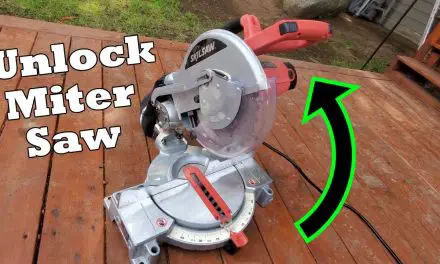You may be aware of the value of dry wood. Wood with low moisture content is acceptable in a woodworking task. Because your total finished work leans on it. So, you can make a big change in your woodworking work by determining the exact moisture level.
How dry should wood be for woodworking? In this article, we have tried to give you complete knowledge of your concern.
How Dry Should Wood be for Woodworking?
If you take wood from a tree sapling, you will see high-moistured wood. Due to the varying shapes and sizes of the wood’s pores, the wood will constrict in an irregular form because of excess water evaporation. So, you need to completely dry the wood before utilizing it to prevent any distortions in your woodworking.
Though It is challenging to provide accurate information regarding wood moisture content, the acceptable moisture content of the wood ranges from 6 to 8 percent. This capability enables it to use for cabinetry, furniture, or any woodworking job.
Moreover, you can install a dehumidifier in your woodworking shop. Thus, your wood will be exposed to the air. It will be ready to use for your task once it has dried.
WATCH MORE:
| The Humidity of the Final Location of Use
|
Within 2% of EMC
|
| 47% -52%
|
9%
|
| 40% -46% | 8%
|
| 33% -39% | 7% |
| 26% -32% | 6% |
| 19% -25% | 5%
|
How to Dry Wood Fast for Woodworking?
Step 1:
You cannot visually determine your wood’s moisture content for woodworking. A moisture meter can help you out! It will help you get a percentage of the wood’s weight. However, a 6 to 7 percent moisture level is adequate for woodworking. If the reading is much higher, it indicates you need to dry your wood.
Step 2:
To proceed with the drying process, arrange a row of stickers between the wood parallel to one another. Try to add sufficient adhesives. It will sustain the thickness of your wood. Stickers and boards should be alternated until all the wood becomes dry.
Step 3:
Now, place a thick piece of plywood on top of the stickers. Then, put some concrete blocks on it. Never use any fabric to wrap the wood; it may obstruct ventilation and collect moisture.
Step 4:
Depending on the temperature, humidity, and ventilation levels, drying time might vary significantly. According to a basic guideline, 25 mm thick wood needs to dry every year.
How to Measure the Moisture Level in Wood?
Understanding how humidity influences your woodworking is an important part of woodworkers. According to the level, wood either gains or loses moisture. Do you want to know more? Read out below-
Moisture Meter:
A moisture meter assists in determining the moisture content of the wood accurately. You will find two different kinds of moisture meters, though.
- Pinned Moisture Meter
Pinned moisture meter implants electrodes into the wood. It features protection against electricity. The amount of water content increases with this feature. The results will indicate whether your wood falls within the 6 to 8 percent range or not. A more thorough penetration of the wood will also aid in locating any amount of moisture in your work.
- Pinless Moisture Meter
Instead of penetrating the wood, it uses the sensor pad technique.
How to Recognize Dry Wood:
- Size:
Split wood will dry up more quickly than large wood.
- Burn Test:
Greenwood won’t burn but rather produce flames.
- Color:
Greenwood typically shows darker color than seasoned wood.
- Weight:
Dry wood is lighter than moist wood. So, you can identify your wood by checking its weight.
- Smell:
Greenwood creates a sweet aroma around it. It will turn into a woody smell if the wood becomes dry.
- Bark:
When all of the bark has naturally fallen off, you can tell it is dry. It may require more drying if some portions seem green.
- Sound:
Shake two pieces of wood together to test them. Dry wood makes a hollow sound.
Final remarks:
Do you eager to know how dry the wood should be for woodworking? Make sure the moisture content of the wood is within the range before using it. If you disregard this, your wood will split, which could pose serious issues for woodworking. So, dry it out whether it is higher than the optimum point.



















